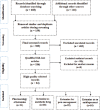A review on the recent application of ketamine in management of anesthesia, pain, and health care
- PMID: 32509610
- PMCID: PMC7266204
- DOI: 10.4103/jfmpc.jfmpc_875_19
A review on the recent application of ketamine in management of anesthesia, pain, and health care
Abstract
Ketamine is considered as a promising drug for many clinical applications even after five decades since its discovery. Ketamine is a dissociative anesthetic agent with a variety of pharmacological effects from anesthetic induction and maintenance to analgesic and sedative depending on the consuming dose. It can be used solely or in combination with other co-adjuvant drugs, increasing their efficacy. Many therapeutic properties of ketamine have been attributed to its antagonism mechanism to N-Methyl-D-aspartate receptor. Identifying new properties of ketamine such as neuroprotective, antiinflammatory, and antitumor effects, on one hand, and taking advantage of subanesthetic regimens of ketamine, on the other hand, have resulted in a widespread use of ketamine in various clinical applications. Ketamine is solvable in aqueous and lipid solutions, providing convenient administration via multiple routes, including oral, nasal, rectal, intravenous, intramuscular, subcutaneous, transdermal, sublingual, and intraosseous administration. Application of ketamine has some advantages over other sedative and anesthetic agents. It produces bronchodilation status, allowing for most secure induction of anesthesia in patients with life-threatening asthma and intense acute bronchial constriction. Ketamine has an excellent hemodynamic profile, makes it the agent of choice for patients with unstable hemodynamics, such as shocked or hypotensive patients. Ketamine usage has been associated with a lower risk of respiratory depression and relatively more conserved airway reflexes. Although being an anesthetic agent, ketamine has been increasingly used in subanesthetic doses for acute and chronic pain as well as depression. Using ketamine in pre and postoperative pain management is well established. However, the studies on ketamine performance in pain management demonstrated contradicting results. On the other hand, various side effects along with no confirmatory data on long-term treatment demand great caution when using ketamine for treating complex chronic pains. The present study aimed to provide a general review on the recent applications of ketamine in anesthesia, pain management, and critical care.
Keywords: Anesthetic agent; NMDA receptor; ketamine; pain management; subanesthetic dose.
Copyright: © 2020 Journal of Family Medicine and Primary Care.
Conflict of interest statement
There are no conflicts of interest.
Figures
Similar articles
-
[From the racemate to the eutomer: (S)-ketamine. Renaissance of a substance?].Anaesthesist. 1997 Dec;46(12):1026-42. doi: 10.1007/s001010050503. Anaesthesist. 1997. PMID: 9451486 Review. German.
-
[Ketamine].Rev Esp Anestesiol Reanim. 1999 Mar;46(3):111-22. Rev Esp Anestesiol Reanim. 1999. PMID: 10228376 Review. Spanish.
-
[Ketamine: the past 30 years and its future].Med Pregl. 2003 Sep-Oct;56(9-10):439-45. doi: 10.2298/mpns0310439r. Med Pregl. 2003. PMID: 14740534 Review. Serbian.
-
Advantages of ketamine in pediatric anesthesia.Open Med (Wars). 2022 Jul 6;17(1):1134-1147. doi: 10.1515/med-2022-0509. eCollection 2022. Open Med (Wars). 2022. PMID: 35859796 Free PMC article. Review.
-
Ketamine as an analgesic: parenteral, oral, rectal, subcutaneous, transdermal and intranasal administration.J Pain Palliat Care Pharmacother. 2002;16(3):27-35. doi: 10.1080/j354v16n03_03. J Pain Palliat Care Pharmacother. 2002. PMID: 14640353 Review.
Cited by
-
The Efficacy and Safety of Remimazolam Besylate Combined with Esketamine for Outpatient Colonoscopy: A Prospective, Randomized, Controlled Clinical Trial.Drug Des Devel Ther. 2023 Sep 18;17:2875-2887. doi: 10.2147/DDDT.S425860. eCollection 2023. Drug Des Devel Ther. 2023. PMID: 37746114 Free PMC article. Clinical Trial.
-
Comeback of ketamine: resurfacing facts and dispelling myths.Korean J Anesthesiol. 2021 Apr;74(2):103-114. doi: 10.4097/kja.20663. Epub 2021 Jan 11. Korean J Anesthesiol. 2021. PMID: 33423410 Free PMC article. Review.
-
Opioid-free anaesthesia: The conundrum and the solutions.Indian J Anaesth. 2022 Mar;66(Suppl 2):S91-S94. doi: 10.4103/ija.ija_256_22. Epub 2022 Mar 25. Indian J Anaesth. 2022. PMID: 35601042 Free PMC article. No abstract available.
-
Efficacy and safety comparison of esketamine-propofol with nalbuphine-propofol for upper gastrointestinal endoscopy in children: a multi-center randomized controlled trial.Front Pediatr. 2023 Jun 27;11:1126522. doi: 10.3389/fped.2023.1126522. eCollection 2023. Front Pediatr. 2023. PMID: 37441574 Free PMC article.
-
Dexmedetomidine and Ketamine - Comrades on an eternal journey!Indian J Anaesth. 2021 Mar;65(Suppl 1):S1-S4. doi: 10.4103/ija.IJA_216_21. Epub 2021 Mar 20. Indian J Anaesth. 2021. PMID: 33814583 Free PMC article. No abstract available.
References
-
- Tang Y, Liu R, Zhao P. Ketamine:An update for obstetric anesthesia. Transl Perioper Pain Med. 2017;4:1–12.
-
- Jonkman K, Dahan A, van de Donk T, et al. 2017. Ketamine for pain.F1000Res. 6. pii:F1000 Faculty Rev-1711. doi:10.12688/f1000research.11372.1. eCollection 2017.
Publication types
LinkOut - more resources
Full Text Sources


